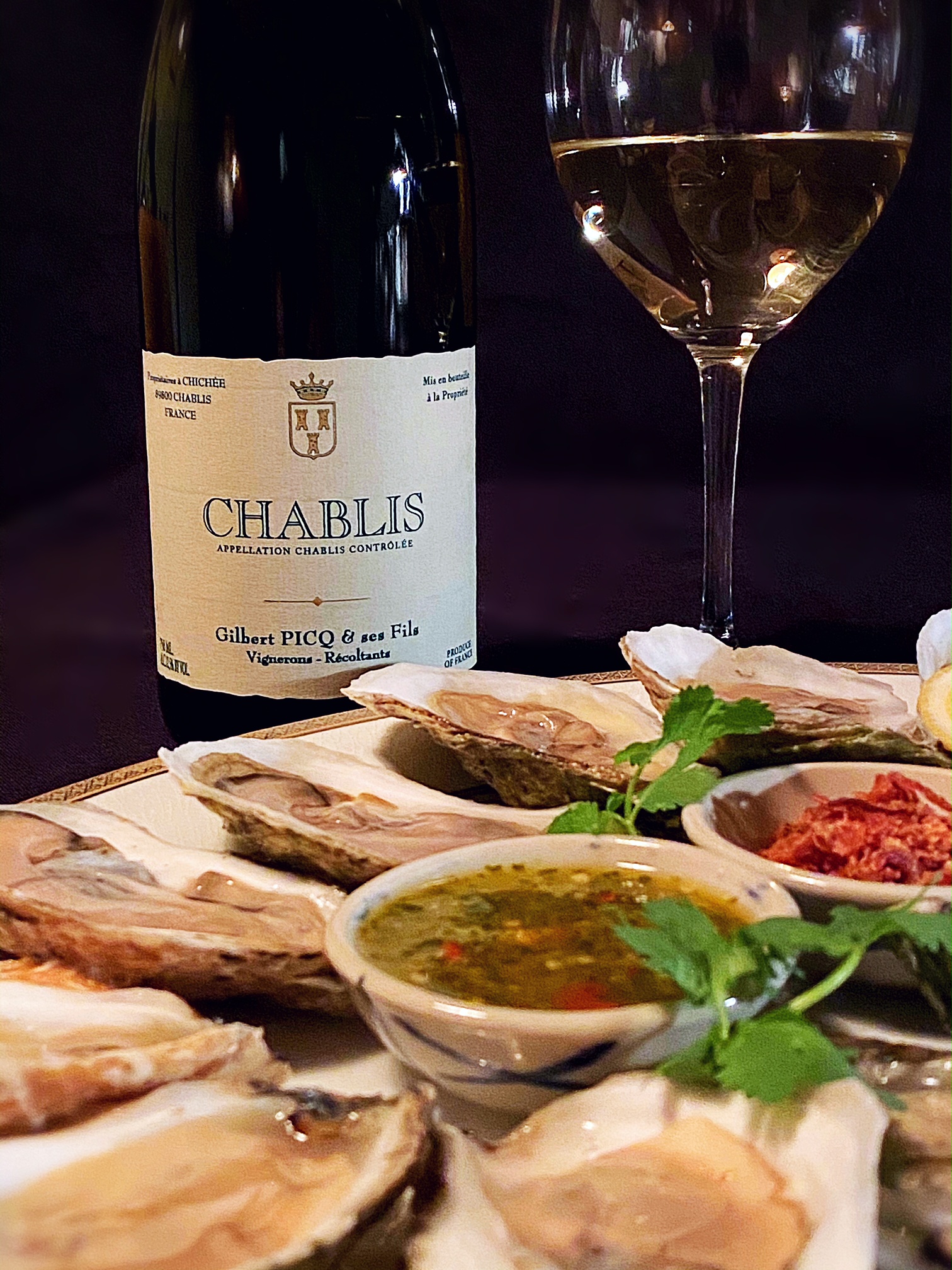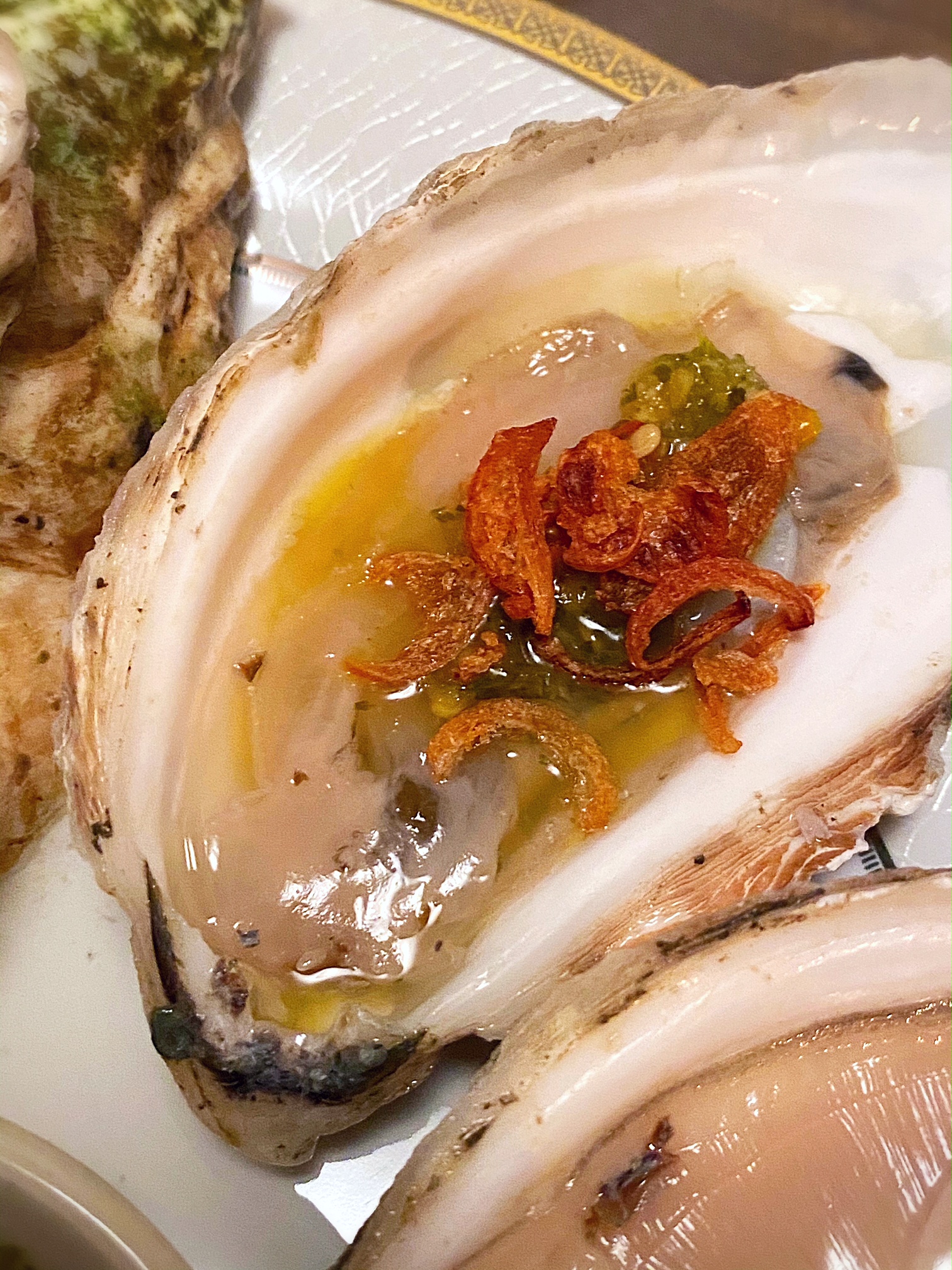Oysters
Posted by Stephan Lublin on February 14 2021 5:57pm
Oysters. You either love them or hate them with a disgust seldom matched. There is rarely a middleground when it comes to slurping down with these wet, briney, slippery little bivalves.
I, for one, love them - tasting several types in a side-by-side comparison, pitting east coast versus west coast, noting the subtle nuances between them, eventually picking out my favorite and crowning it champion. It’s like an edible oceanic wine tasting with a trophy to be won for best in show. Whomever the victor, another half dozen of his cousins join his fate, being shucked, spritzed with lemon, and gently slid down the hatch.
For accompaniments, it’s simple, either lemon or mignonette, never cocktail sauce. The only other considerable topping is nam jim seafood, the Thai seafood sauce made from lime juice, chilis, cilantro, garlic, salt or fish sauce, and sugar, that seems to make its way onto all things from the ocean. A small spoonful over a fresh oyster, along with a final addition of crispy-fried shallots creates a sour, sweet, spicy, and crunchy flavor-explosion, leaving your tastebuds firing on all cylinders.
Now that your sauces are in order, it’s time to choose a wine to match these salty little sea creatures. Never, ever go red, unless you're a psychopath. Wines with high acid and minerality are best, and the classic pairings of either Brut or Brut Nature Champagne, Muscadet, or Chablis are all excellent choices. I’m going Chablis for this evening’s oyster battle.
For those less acquainted, Chablis is located in the very north of Burgundy and, by both location and climate, is closer to Champagne than it is to the rest of its region. The monovarietal wines from Chardonnays produced here offer crisp minerality and an acidic backbone. The best vineyards are given Grand Cru status, followed by Premier crus, then the generic Chablis appellation, and finally, Petit Chablis, the little sibling of them all.
Here, the unique Kimmeridgian soils date back 180 million years to the Jurassic period. This mixture of clay and limestone containing tiny fossilized oyster shells gives a distinctive steely characteristic to the wines, and make an oyster pairing a no-brainer. All of the grand cru vineyards are grown on Kimmeridgian soils, while the lesser Petit Chablis are on a similar type of Portlandian soil, which lacks a certain finesse compared to the Kimmeridgian.
The 2019 Gilbert Picq Chablis comes from a collection of vineyard sites, all grown on this clay-limestone mixture. Gilbert’s children, Didier, Pascal and Marilyn manage the estate, employing organic agricultural practices throughout their vineyards. Native yeast fermentation along with élevage in stainless tank allow the pure varietal characteristics to shine without the influence of oak. In the glass it shimmers a pale gold, while the characteristically sleek, Chablisienne steely-minerality notes, along with floral green pear and lime zest aromas, seduce the senses. The minerality carries over to the palate where it meets bright acidity, keeping things lean and clean with each sip - a fresh, expressive, and exemplary Chablis.
Tonight, the winning oyster was the Cotuit from Massachusetts. The firm texture and briney, saline liquor intermingled perfectly with the pure and zesty wine. Sadly, there can be only one champion, but the next battle lies just around the corner. And although no one can predict who will come out on top, one could argue that anyone eating oysters while drinking Chablis is the true winner. Cheers!


(Oyster with nam jim seafood and fried shallots)

